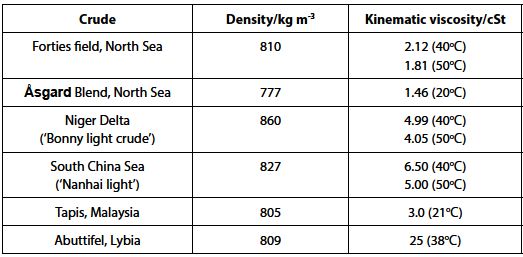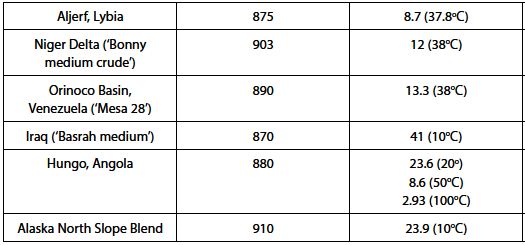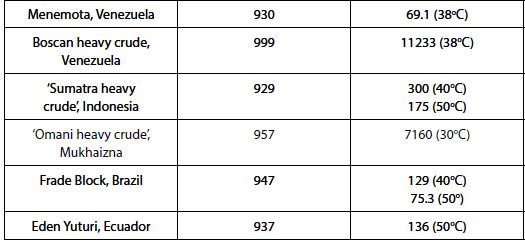Density is an important property in the pricing of a particular crude oil. Lighter crudes are preferred because they are richer in the lowest boiling distillate, namely gasoline, which remains the most saleable product of oil refining. Consequently the usual index of quality, the API gravity, is defined in such a way that it is higher for light crudes and lower for heavy crudes having therefore the reciprocal of the density in its definition. The API gravity is given by:
degreesAPI = 141.5/ρr – 131.5
where ρr is the density relative to that of water at 60°F (15.6°C). Hence water itself has an API gravity of 10 degrees. The APP2 gravity has been in international use as an indicator of crude oil quality for over a century and also applies to fractionated material. The following definitions are widely used:
Light Crude: API gravity higher than 31.1 degrees.
Medium Crude: API gravity between 22.3 and 31.1 degrees.
Heavy Crude: API gravity below 22.3 degrees.
Converting to fundamental units, light crudes are below 870 kg m-3, medium crudes are between 870 and 920 kg m-3 and heavy crudes are above 920 kg m-3.
Examples: The Table below, split into three parts, gives six examples each of light, medium and heavy crudes from different parts of the world.
Light crudes

Medium crudes

Heavy crudes











